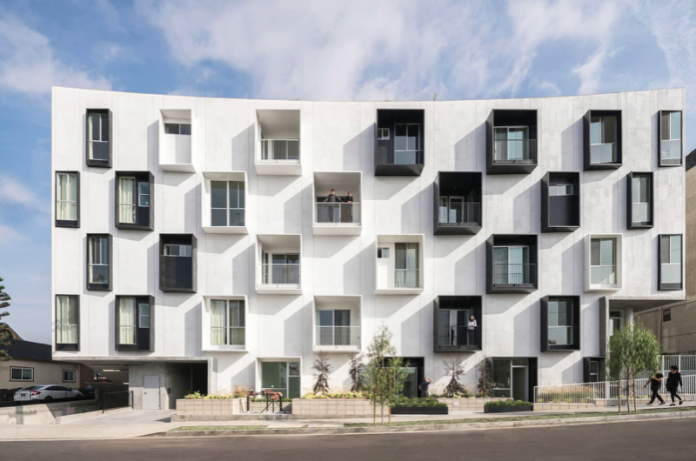
How can a city increase its density gracefully? What would such a transformation look and feel like for residents? These questions guided the series of informative and wide-ranging presentations at AIA Seattle’s 2019 Housing Design Forum. From the beginning one theme remained constant throughout the day: when density is done right, it prioritizes people. “Good density” centers equity, sustainability and livability at the forefront of design efforts.
The forum took a mostly macro-level to the topic of density, and while some presentations, including the keynote address by architect Lorcan O’Herlihy, connected the larger social and environmental issues to the design process of individual buildings, zoning policy emerged as the one of the hottest topic of discussion.
This was in part because the event was kicked off by presentations made by urban planners from Portland and Minneapolis which focused on efforts these cities are taking to increase density without displacing vulnerable residents.
Portland currently has two major initiatives aimed at increasing density across the city: The Residential Infill Project, which focuses on adding density to current single-family zones, and Better Housing By Design, which revises development and design standards multi-family zones outside of the City Center. Both initiatives focus on increasing housing options for households of all ages, incomes and sizes, although according to presenter Sandra Wood, Principal Planner in the Bureau of Planning and Sustainability at the City of Portland, displacement of low-income and minority residents continues to be a concern. While both the Residential Infill Project and Better Housing By Design are expected to decrease displacement in comparison to no action alternatives, the City is currently reviewing additional anti-displacement strategies to implement alongside both initiatives.

Minneapolis has gained accolades in pro-density camps for its recent decision to end single-family zoning. Visiting urban planners from Minneapolis shared some of the strategies from the Minneapolis 2040 Comprehensive Plan, which seeks to remove racial and social barriers that have negatively impacted communities of color in the city. Similar to Seattle, Minneapolis has persistent racial disparities in homeownership.
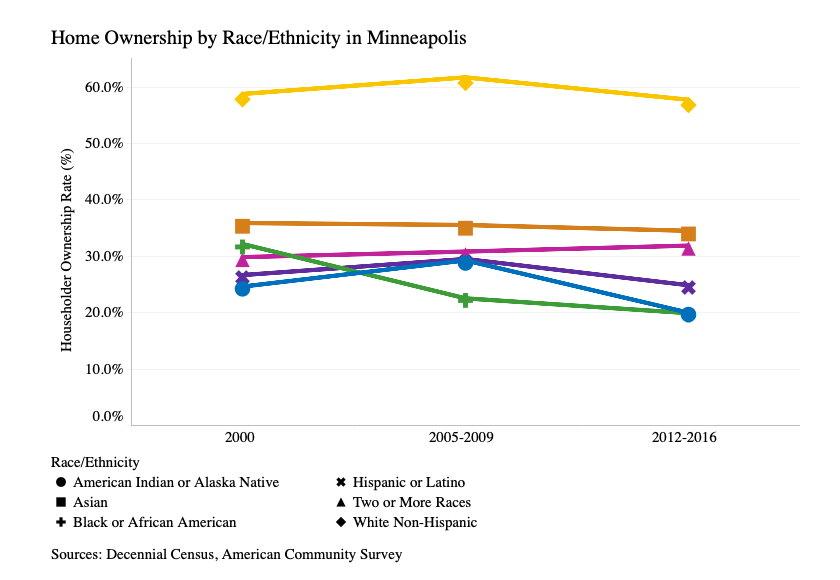
Some of Minneapolis’s bolder strategies for increasingly housing supply and affordability include allowing multifamily housing on public transit routes and allowing triplexes in neighborhoods that contain primarily single-family homes. Displacement is also an issue in Minneapolis, where many neighborhoods are entering what the City defines as “early stage” gentrification. While Minneapolis is implementing targeted anti-displacement policies, the steps they have taken so far are not as bold the zoning changes they have implemented. Minneapolis currently appears to be trying to get ahead of the supply side of the affordable housing curve in a effort to prevent displacement before it occurs, but officials are increasingly acknowledging that increasing housing supply is not a panacea. “Minneapolis is trending toward becoming a cold San Francisco, and that’s not a pretty sight,” said Heather Worthington, Director of Long Range Planning at the City of Minneapolis.
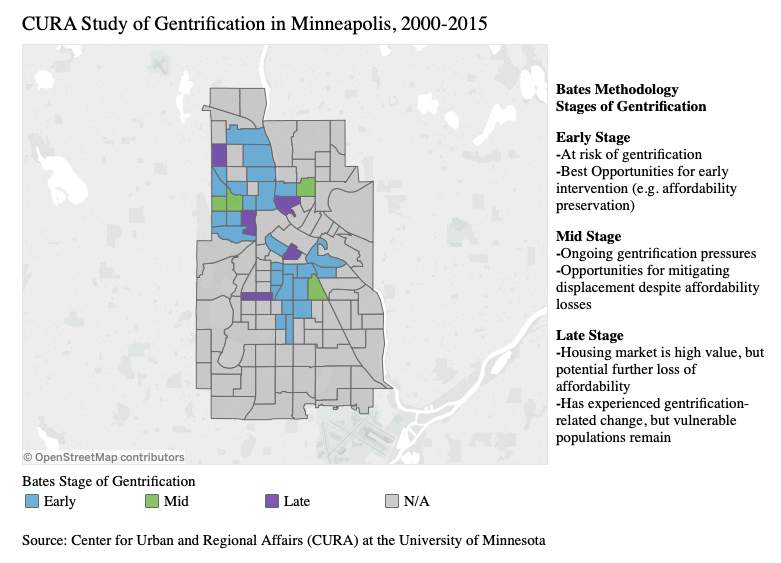
Considering how much farther along Seattle is in the housing affordability crisis, Worthington likely employed a little bit of classic “Minnesota nice” when she avoided making the comparison to Seattle.
Under Seattle’s current zoning policies, urban centers and villages have absorbed the majority of housing growth, a trend that has increasingly come under scrutiny in part because funneling growth into a small amount of land zoned for larger structures does not open the door for increasing “missing middle” housing, like townhouses, rowhouses, and small apartment buildings, which are often more affordable housing options.
Michael Austin of the Seattle Planning Commission touched on the need to tweak zoning to allow for the creation of more affordable housing throughout the city during his brief presentation on some of the major takeaways from their Neighborhoods for All report.
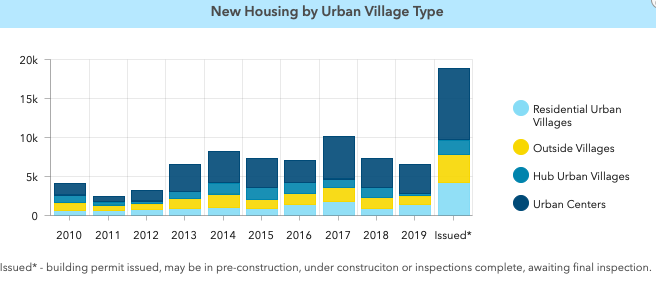
Density Case Studies
The forum also included case studies from across Seattle that demonstrated some of the different types of developments adding density to the city.
News that hearing examiner Barbara Dykes Ehrlichman dismissed Queen Anne Community Council’s appeal of the City’s backyard cottage reform added extra excitement to a presentation showcasing designs for accessory dwelling units (ADUs) by Ian Butcher and Kailin Gregga of Best Practice Architecture in Seattle, a highlight of which included a triplex in Central Seattle which adds extra density by including an ADU within each individual unit.
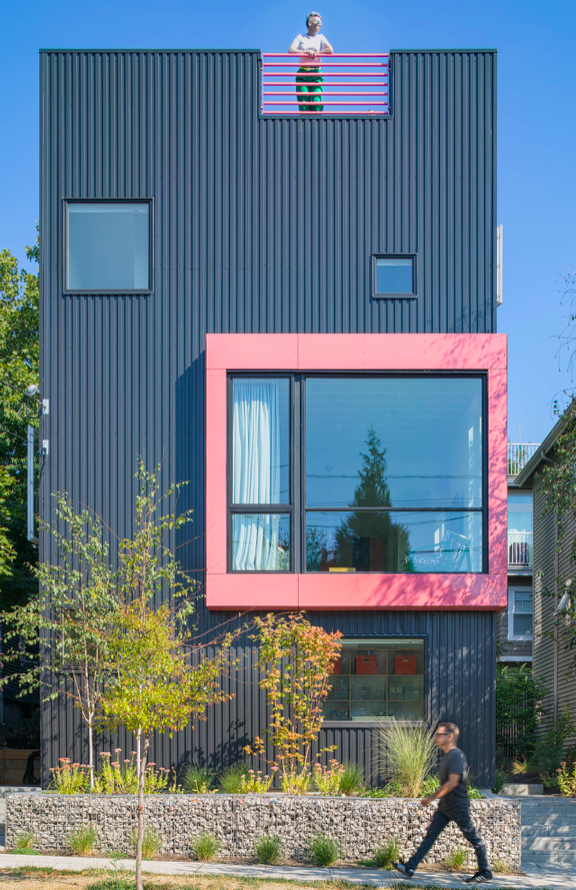
Micro-housing proponent and architect Daniel Neiman presented on The Roost, a co-living development for artists located near Rainier Avenue South and South Dearborn Street.

While most presentations focused on the social aspects of housing Sloan Ritchie and Brittany Porter presented on Pax Futura, the first passive house certified development of its size in Seattle. The four-story, 35-unit building located in Columbia City uses 80% less energy to heat and cool the units than standard buildings .
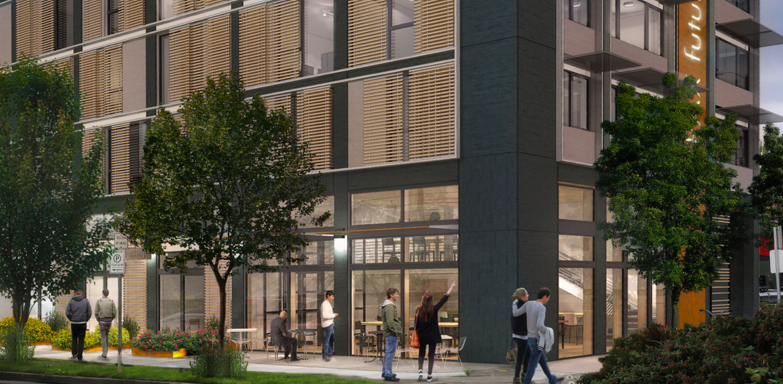
More so than any other case study, Othello Square, an ambitious plan to construct a four building campus on the largest undeveloped piece of land in Rainier Valley, demonstrated how a project that adds density to a community can also further goals related to race and social equity. Faduma Ahmed, Carey Dagliano, and Rachael Meyer presented on how Othello Square will bring affordable retail space, an early learning center, a high school, a business incubator, cooperatively owned and mixed-income housing, a health clinic, and a multicultural center to Othello, a neighborhood where more than half of residents are immigrants and over 60 languages are spoken.

A series of lightning talks on topics specific to density in Seattle added further detail to the discussion. Highlights included a plan for a new walkable Aurora Avenue, which presenter Ryan DiRaimo has previously written about for The Urbanist, and a presentation by Reed Kelly on best practices for designing stoops that enhance both life on the street and individual residences.

Finally, keynote speaker Lorcan O’Herlihy, a Los Angeles based architect whose firm works on projects across the US, shared stories of his philosophy of “amplified urbanism,” which puts forth a design methodology “…rooted in creating fluid interaction between public and private spaces, emphasizing social and civic connections, and harnessing existing ecological and infrastructural patterns.”
O’Herlihy shared examples of projects his firm has completed in LA, Detroit, and Raleigh, NC, that exemplify how this approach to architecture takes into account the larger framework within the building exists. MLK 1101, a permanently supportive housing development built next to a McDonalds in one of LA’s poorest zip codes was presented as an example of how can amplified urbanism can be applied to projects that occur on a budget.
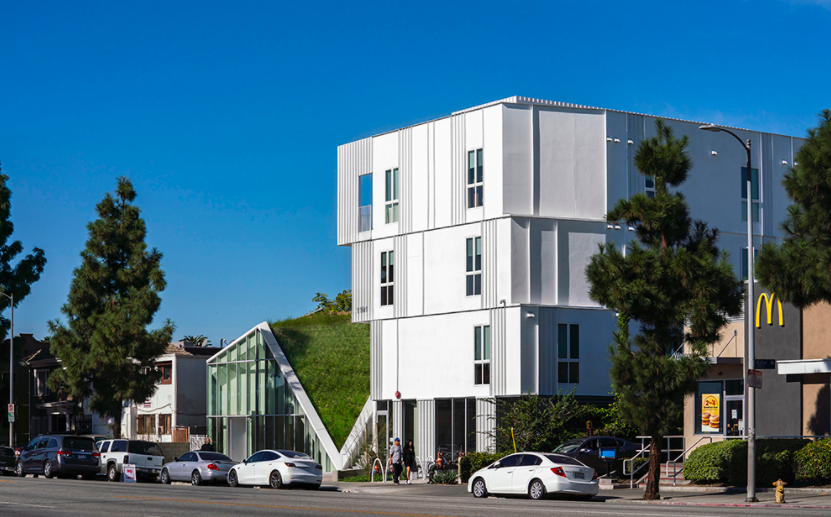
Questions on how to convince density skeptics
The majority of the crowd seemed highly receptive to the notion that if done correctly, increasing density enhances cities on a variety of levels while furthering equity and sustainability goals. At the same time, the question of how to convince density skeptics remained largely unanswered throughout the day.
An audience member who identified herself as “an urban planner from a suburban town” explained how residents have pushed back against zoning for increased density out of fear that new buildings will not compliment the town’s current architectural styles. Even if residents accept all of the benefits of density, she explained, they don’t want the modern style of buildings they associate with dense development. Her comment led to a long laugh from the crowd and then a response from one of the speakers centered on how architects have a personal responsibility to design quality buildings.
Another audience member from Bainbridge Island explained that people there have been fighting against ADU reforms out of a fear that it would lead to developers “sneaking more density” in the form of duplexes and triplexes into single-family zoned areas. Many in the room seemed to look at the issue differently, arguing that sneaking in more density is good for the community and should be encouraged.
While such a response might succeed in a sympathetic crowd, it’s clear that more talking points are needed in order to convince more of the American public that density can be done right. As Andres de Wet wrote his article for The Urbanist, American Deserve Better Than Disposable Urbanism, an entire generation of Americans has forgotten or never known what a dense, walkable city looks and feels like. Finding a way to successfully communicate the many tangible and intangible benefits of density in a manner that resonates with more of American society might be a critical next step toward successfully incorporating density in more communities.
Natalie Bicknell Argerious (she/her) is a reporter and podcast host at The Urbanist. She previously served as managing editor. A passionate urban explorer since childhood, she loves learning how to make cities more inclusive, vibrant, and environmentally resilient. You can often find her wandering around Seattle's Central District and Capitol Hill with her dogs and cat. Email her at natalie [at] theurbanist [dot] org.


